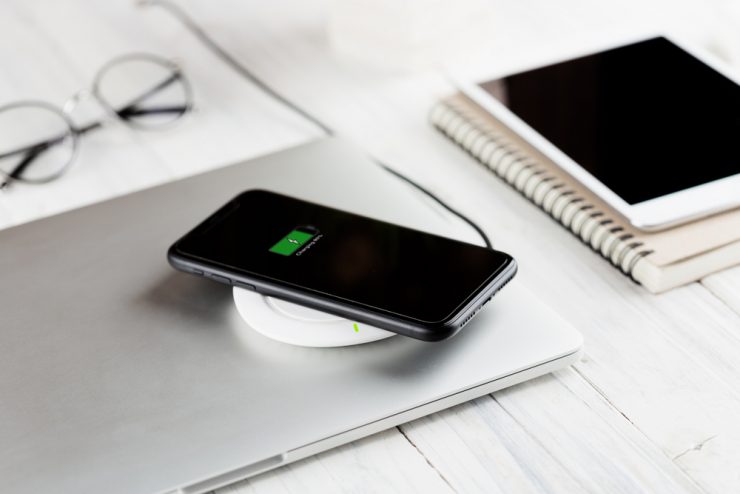Charging cables are so yesterday. Nowadays, it seems that every flagship phone features wireless charging capability. It is the newest technology in the industry, and everyone wants a piece of it. But, for those who have not had the opportunity to try out this new technology, it is difficult to fathom how a device can be charged without connecting it to the charger. It is quite simple, really.
So, how exactly does wireless charging work? Here is everything you need to know about wireless chargers.
When Was Wireless Charging Invented?
Wireless charging is not new. In fact, wireless charging has been around for about a century now. It was first demonstrated by renowned innovator Nikola Tesla when he proved that electricity can be transferred via an electromagnetic field. However, scientists had not been able to exploit this technology until recently.
What Is Wireless Charging and How Does It Work?
As the description suggests, wireless charging involves the transfer of power from a power outlet to a gadget without plugging it into a cable. Instead of the usual charger cable, wireless charging uses a transmitting pad and receiver. The transmitting pad, however, is wired to conduct electricity from the power outlet.
Wireless charging essentially is inductive charging. Electric current is passed through two coils made of thin wires to create an electromagnetic field. A receiver on the phone then allows the transmission of power when the phone is placed on or near the transmitting pad. The electricity transmitted through the electromagnetic field is turned into Direct Current (DC) power and transferred into the phone’s battery, which then commences charging.
For wireless charging to work, your phone needs a case that support inductive charging. Phones that support wireless charging have special cases made out of plastic or glass (wireless charging does not work through metal and hard plastics, although it can work through thin plastic cases). A receiver on the phone’s case lets the wireless charger know that it is compatible and transmits information such as the current battery power and voltage.
Qi Standard in Wireless Charging
Wireless chargers are shaped like mats or stands, the sort of which you would use with a computer mouse. They come in varying sizes. They are rated on the basis of wattage or output amperage. By wattage, 5W and 10W wireless chargers are the most common – however, there are new, more powerful chargers emerging today. They all are built on the Qi standard. This standard was set by Apple with the iPhone 8 and iPhone X.
Qi has three distinct power specifications. The first, low power, is what small gadgets such as phones and electric toothbrushes use. Wattage under this specification ranges between 5W to 15W. The second, medium power, is used for larger gadgets such as laptops and monitors. Medium power can transmit up to 120W. The third and highest specification is capable of transmitting up to 1kW of power and is used to power larger devices such as vacuum cleaners and kitchen utensils. All major phone brands, including Apple, Samsung, Sony, and LG, have adopted the Qi standard.
Future Uses of Wireless Charging
At the moment, wireless charging is limited for use with small gadgets such as electric toothbrushes and smart phones. However, scientists have ambitious future plans for this technology. For instance, furniture maker IKEA is making furniture with in-built wireless chargers, while authorities are building wireless charging stations all over cities to ensure that everyone has access to power. In fact, there are already ongoing ambitious experiments.
South Korea is adopting wireless charging to power up the city’s electric buses. The government has built extensive charging stations where these buses charge when parked. It is slow, but it is more convenient than plugging in every bus. And, if it works better in the future, it may be the answer to making elimination of cars powered by fossil fuels practical.
Pros and Cons of Wireless Charging
Unsure if a wireless charger is for you? There are pros and cons to using a wireless setup over the traditional wired charger.
The Convenience in Wireless Charging
Wireless charging is the way to go in the future. Technological advances will make it easier to power all sorts of devices, and even electric-powered cars, via wireless charging stations. It will also support advances in the Internet of Things by making it possible to charge small devices without necessarily plugging them in.
Some of the benefits of wireless charging are already notable. For starters, it is a safer way to charge – you may have heard of cases of phones exploding when plugged into a power outlet, or live charging cables electrocuting users.
Wireless charging also puts less strain on the phone’s port, which can be easily damaged when charging. It is also a simpler way to charge as you don’t need to plug your phone in – just drop it on the pad and you’ll be good to go. And, now that Qi wireless charging stations are popping up everywhere, you don’t have to carry your charging cable everywhere you go or look for power outlet.
Shortcomings of Wireless Charging
Wireless charging is a relatively new technology among phone manufacturers. Like any other new technology, there is still some way to go. Currently, wireless charging poses several shortcomings.
For starters, wireless charging is considerably slower than charging through a charging cable – it is especially slower in phones with Quick Charge technology. The transfer of electric current through inductive charging takes more time since it has to be converted. Wireless charging may also make your phone heat up more than it usually would when plugged in. If you want to charge your phone faster, a wired charger is the better bet – there are even extra fast iPhone chargers on the market.
Finally, you cannot use your phone when charging it wirelessly, as it has to be properly positioned on the charging pad, but you can use it however you wish when plugged in. It is also important to note that wireless charging stations only charge the devices they are designed for, hence the need for a receiver to enable communication between the pad and charging device.
However, wireless charging has come a long way, and it promises to only get better with advances in technology. Soon, humanity may do away with charging cables altogether.







Add comment